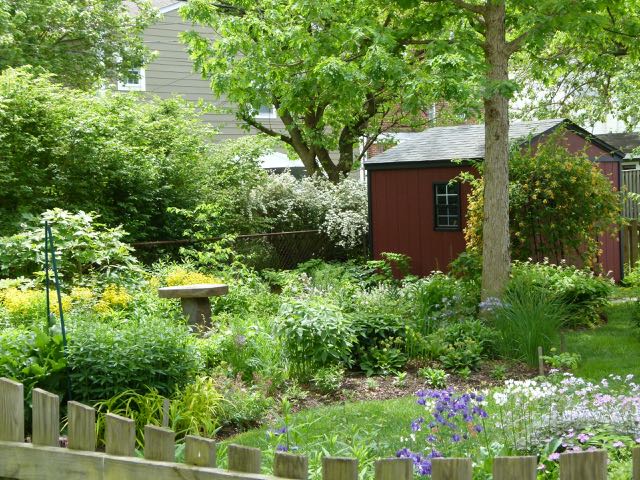Table Of Content

Native plants are a natural choice for resident and migratory birds. Native plants draw moths and beetles that feed insectivorous birds, and the foliage is the feeding ground for caterpillars, a primary food source for many bird species and their nestlings. These designs move away from common foundation plants that tend to be overused, non-native (often invasive such as Japanese barberry), and not connected to our local ecology. Landscapes with more plant diversity are more resilient to changes in the environment and native plants support beneficial insects that provide pollination, food for birds, and natural pest control.
thoughts on “How To Design A Native Plant Garden – Fostering Biodiversity In Your Yard”
Bee City USA Gainesville native plant garden coming to Grow Hub - City of Gainesville
Bee City USA Gainesville native plant garden coming to Grow Hub.
Posted: Tue, 10 Oct 2023 07:00:00 GMT [source]
May 4 will feature South County gardens, mostly located in coastal cities and Irvine, she said, and May 5 will feature a variety of gardens around north Orange County. Some private homes and some public gardens, including plant demonstration gardens created by local water districts, make up the tour stops. Plants that are well-suited to your local climate and soil conditions are more likely to thrive and resist common challenges. Researching native plant species that are native to your region can help you select the best plants for your garden and minimize the risk of disease or pest infestations.
Plant list for sunny conditions
As Landscape Designers, we focus on implementing CA native plants that support our local butterflies, birds and bees. By taking inspiration from our local foothills, we create gardens that are welcoming and beautiful. Local garden centers and nurseries are a good place to start. Independent stores may be more likely to offer native plants than big box hardware stores. Call a few in your area before you stop by and ask what they offer. As we mentioned earlier, plants that have a lineage in your local area or climate are the best options for you, the success of the plants, and local wildlife.
Planning your native plant garden
It’s important to vary the heights of vegetation when you create your native plant garden because they are a factor when it comes to providing shelter, nesting and food for wildlife. For example, brown thrashers, Georgia’s state bird, nest on or very near the ground in a shrub, tree, or vine tangle. Forsythia and gooseberry shrubs, honey locust trees, and crossvine are among preferred nesting sites for brown thrashers. If you are in the Sierras(coniferforest) or coastalareas and you want to use a desert or grassland plant, use arock mulch, and plant in the open, away from trees. Also clumpthe same types of plants together so they support each other andyou can treat them alike, see companionplanting.
It has been my experience that this is the most important element in developing a successful native garden. Anytime you stray too far off, the plants don’t flourish and they require more effort. Planting a swamp milkweed on a dry hill or a primrose in a bog will never work.
Showy pincushion-like flowers attract butterflies, moths, and other beneficial insects. Native to much of the U.S., this sturdy carefree shrub makes a good substitute in areas where butterfly bush is invasive. Native plants are endemic to a particular area, occurring there long before human habitation. These plants evolved and adapted to the local climate and growing conditions, becoming an integral part of the ecosystem. Some believe that natives aren’t attractive, which is simply not the case. By including a variety of natives that bloom at different times and have multi-seasonal attributes, you can have a beautiful natural landscape year-round.

Make a list of species that not only appeal to you visually but also suit your garden's conditions and location in the US. After selecting your native plant species, consider their sunlight and water requirements to ensure they thrive in your garden. Group plants with similar needs together to create ideal growing conditions for each species. If you want to establish a formal native shade garden for your front yard or other area, this plan can help you. This Front Yard Formal article by Scott Woodbury from the spring 2019 issue of the Missouri Prairie Journal is a companion to this plan, and contains photos of many of the featured plants. Learn more about plants featured in this plan from this audio file from Scott, and learn more about the plants’ growth habits from this audio file from Scott.
Learn more about native plants in your city
As individuals and communities, we can begin reversing this trend by adding native plants to our landscapes and restoring natural biodiversity. Ifyou wish to attempt the landscape design yourself, you can get alist of plants that will grow in your yard from our plantpicker. If you can sketch a drawing of your yard with theplants listed out for each section, we'll be happy to help sortout or correct the plant list. Those of you that have read thewebsite (at least a page or two) and used withat least a clue of how to care for a native garden arereally getting your garden close to 'right' on your own. Dealing with common challenges in native plant gardens, such as invasive species and pests, can be a frustrating but necessary part of maintaining a healthy ecosystem.
Plant thelong-lived plants together away from water, away from soildisturbance. Stick to the plants that occur in the same or a similar climatefor a maintenance free garden. When you get too far off, theplants start having problems and you have to do more work. Back yard – Once more shade is established in the back yard under the swamp white oak, everything else may be planted in this corner. Check out our article, “What is a Native Plant” for more information.
Natives are easier to grow than non-native ornamentals, as they are adapted to that area. Recommended Native Plants of Maryland has photos and details about native plants including many of the plants in the following lists. A range change happens when a species' current range expands, shrinks, or shifts. This phenomenon can occur naturally or with human involvement for native and non-native species. Hence, if a native species naturally expands its range without human intervention, it should not be labeled as non-native, introduced, or invasive.
We are a full-service, experienced landscape design group dedicated to native plants. Since 2013 we have designed hundreds of beautiful, tailored, sustainable gardens in Northern Virginia, D.C. Our gardens are biodiverse, and thoughtfully designed, to meet both our client’s needs and style and the conditions of their site. Although plants are our passion, we also plan and install all elements of a successful garden environment, including trails, walkways, patios and stairs. Native plants have co-evolved with local wildlife over thousands of years, making them integral to the ecosystem.
Pay attention to how much sun the area gets during each season. A good trick to guide plant selection is to observe which plants are thriving nearby. Wild Ones depend on membership fees, donations and gifts from individuals like you to carry out our mission of healing the Earth, one landscape at a time.

No comments:
Post a Comment